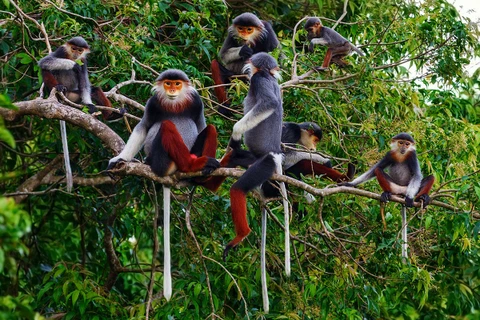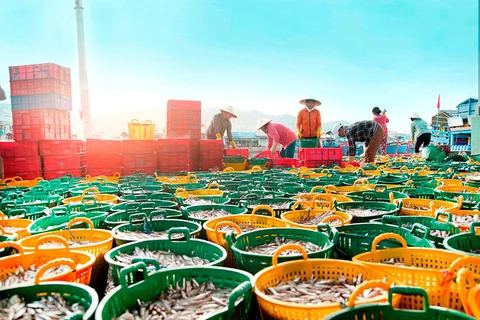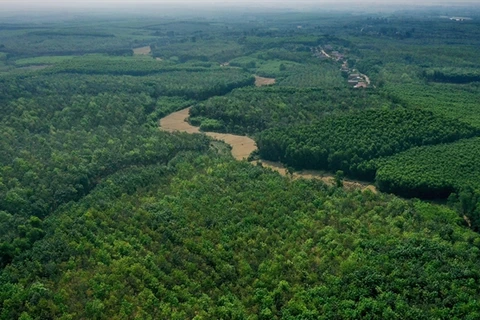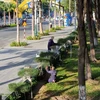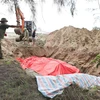 Cat Ba Biosphere Reserve in Cat Ba Archipelago, the largest limestone archipelago of Vietnam with 388 big and small islands, covering a total area of 336sq.km in Cat Hai District, Hai Phong city (Photo: VietnamPlus)
Cat Ba Biosphere Reserve in Cat Ba Archipelago, the largest limestone archipelago of Vietnam with 388 big and small islands, covering a total area of 336sq.km in Cat Hai District, Hai Phong city (Photo: VietnamPlus) Hanoi (VNA) – Vietnam is adopting solutions, including perfecting and legal framework, to intensify comprehensive actions at all levels to reverse the trend of biodiversity degradation.
According to the United Nations Development Programme, Vietnam is recognised as one of the countries with the richest biodiversity in the world with different ecosystems including tropical forests, marine and coastal ecosystems. More than 100 bird species and 10% of flora in the country are endemic.
However, experts from the World Wide Fund for Nature in Vietnam (WWF Vietnam) said that Vietnam's biodiversity is degrading.
Pham Minh Thao, Director of WWF Vietnam's Program Development said that the degradation of natural ecosystems greatly affects the supply chains of food, energy, infrastructure and transportation as well as people's lives. She attributed the degradation to population growth, changes in land use, unsustainable exploitation of natural resources, impacts of global climate change and environmental pollution. In addition, the legal system on biodiversity protection is incomplete and ineffective, while the awareness of authorities and people about the issue remains limited.
Hoang Thi Thanh Nhan, Deputy Director of the Ministry of Natural Resources and Environment’s Nature Conservation and Biodiversity Department said preventing biodiversity loss in Vietnam not only fulfills national targets but also contributes to achieving global goals.
To reduce biodiversity loss, Nhan said the Vietnamese Government promulgated the National Biodiversity Strategy to 2030, with a vision to 2050, which aims to increase the acreage of protected ecosystems and promote the conservation and sustainable use of biodiversity, contributing to socio-economic development in the direction of green economy and proactive adaptation to climate change.
Besides the strategy, the Government has also issued a project to strengthen the prevention and combat of biodiversity crimes until 2030, with a vision to 2050, with a resolve to create breakthroughs in compliance with regulations relating to biodiversity.
Last year, the Ministry of Natural Resources and Environment submitted the draft National Biodiversity Conservation Plan for 2021 – 2030 period, with a vision to 2050 and the draft national programme on conserving endangered, precious and rare wildlife to 2030 with a vision towards 2050 to the Prime Minister for approval.
Specialised agencies are also urgently finalising amendments to Decree No.08/2022/ND-CP and Circular No.02/2022/TT-BTNMT providing detailed guidance on the implementation of some provisions of the Law on Environmental Protection which include content on biodiversity impact assessment and biodiversity compensation.
This year, the Nature Conservation and Biodiversity Department will conduct assessment of the 15-year implementation of Law on Biodiversity, Thao said, elaborating that it will create foundation for proposing amendments to the 2008 Law on Biodiversity.
Meanwhile, research will be conducted to propose mechanisms, policies, and management measures for protecting natural landscapes, establishing management mechanisms for conservation areas beyond protected areas, she continued./.

